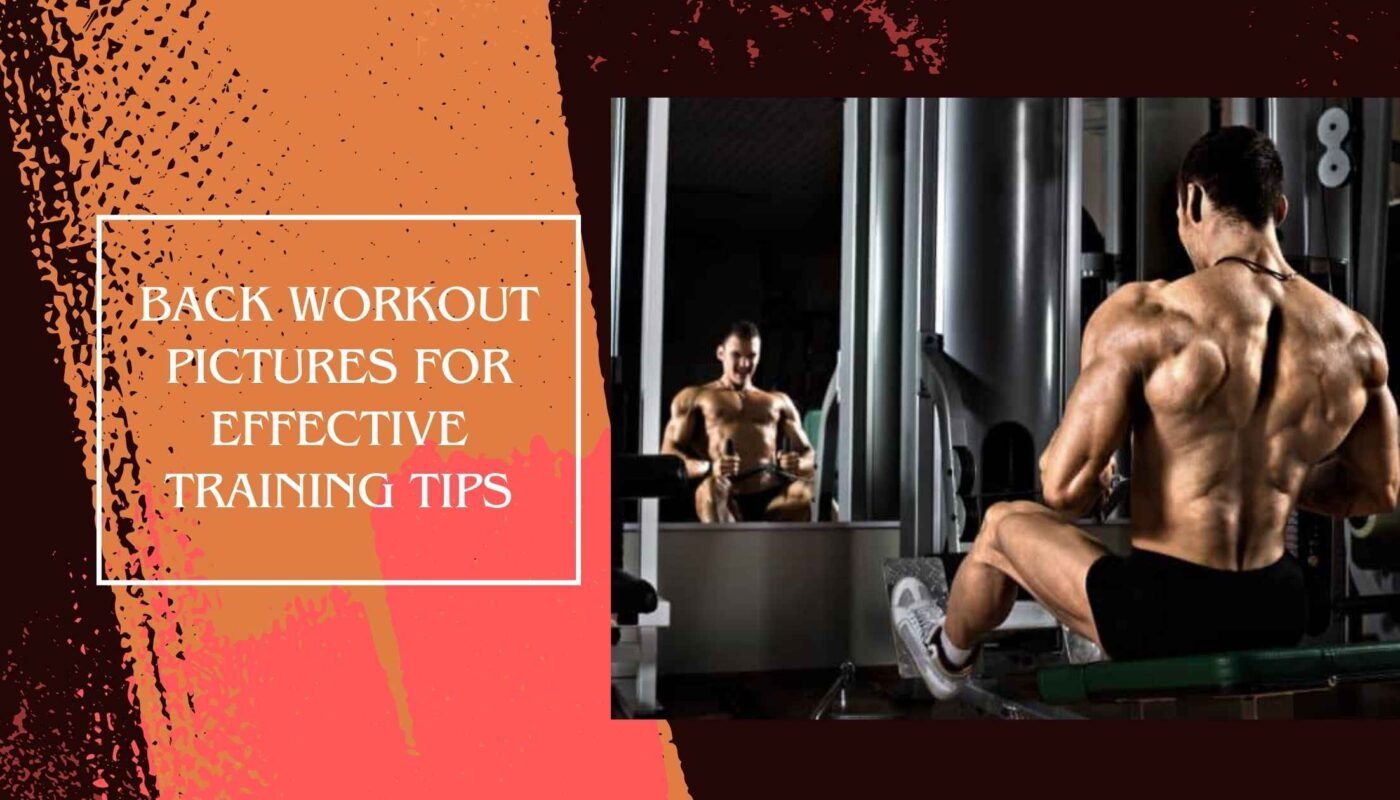Imagine stepping into the gym, filled with determination and sweat. You’re ready to focus on your back, a key muscle group often overlooked. Mastering the back is vital for strength and posture.

As you look around, you see people sharing their back workout pictures. These images show their hard work and help others set goals. They’re great for learning proper techniques and improving your workouts.
With the right pictures, you can start a journey to a strong back. This will support you in all your fitness goals.
Table of Contents
The Importance of Back Training
Understanding the importance of back training is key for a balanced physique. Many gym goers focus on muscles you can see, but forget about the back. This can lead to muscle imbalances that affect strength and looks. A strong back adds to your appearance, giving you a V-shape and bigger arms.
Back exercises boost muscle size and help with posture. They strengthen muscles that support your back, lowering injury risks from sitting too much or intense workouts. Back pain affects four in five adults, showing how crucial a strong, flexible back is.
A study in the Journal of Strength & Conditioning Research found back workouts helped men with chronic back pain for 16 weeks. Another study showed deadlifts reduced pain and improved life quality for those with low-back issues. Simple stretches and back exercises can ease tension and boost strength in other exercises too.
The back has complex muscles that need focused training to develop well. Many people don’t fully train their back, which can slow down progress. Using exercises like Kettlebell Swings and Barbell Deadlifts targets upper and lower back muscles. These exercises improve muscle mass and help with shoulder stability.
Adding back training to your routine has big benefits. The role of back training is crucial for overall fitness. It helps prevent injuries and supports a long-lasting fitness journey.
Understanding the Back Muscle Groups
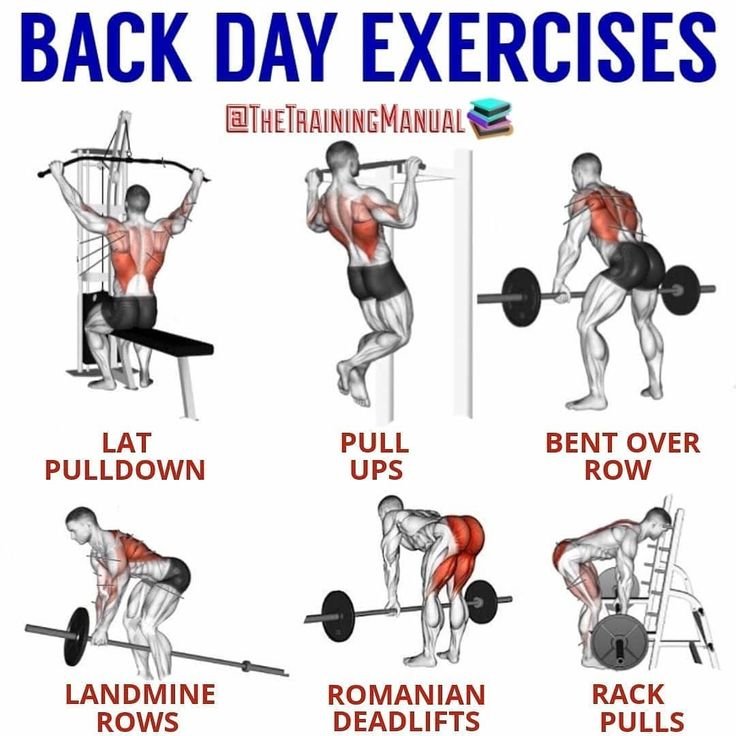
Learning about back muscle groups is key for better back training. The back has many muscles that help with stability, movement, and strength. Important muscles include the trapezius, latissimus dorsi, rhomboids, and erector spinae. Each muscle plays a role in keeping posture right and helping with various activities.
The latissimus dorsi, or lats, are the biggest muscles in the upper back. They help create the “V-taper” look when worked out right. On the other hand, the posterior deltoid is small but crucial for moving the arm out and rotating it outward. Knowing how these muscles work together is important for exercise.
The erector spinae muscles run along the spine and keep the spine straight. They are key for bending or hip hinging. The trapezius muscle has three parts that work together to move the shoulder blade and turn the head.
The rhomboids connect the spine and shoulder blades, helping with stability during exercises like rows. The rotator cuff muscles also play a big part by keeping the arm bone in place in the shoulder socket. They help with moving the arm in and out, making sure you can move fully in back exercises.
Adding exercises like
and seated cable rows to your routine can boost these muscles. It also helps with posture and lowers injury risk. Training all major back areas is key for strength and function.
| Muscle Group | Function |
|---|---|
| Latissimus Dorsi | Pulling movements, contributes to “V-taper” appearance |
| Trapezius | Shoulder blade movement, head and neck motion |
| Rhomboids | Scapular retraction and stability |
| Erector Spinae | Maintains spinal alignment, supports bending movements |
| Posterior Deltoid | Arm abduction, external rotation |
| Rotator Cuff | Stabilizes shoulder movement |
Back Workout Pictures for Effective Training Tips
Using back workout pictures in your training helps you understand form and technique better. These pictures are key tools for learning the details of exercises. The back has four main areas: upper and outer lats, lower lats, middle back, and lower back. Each area needs specific exercises and angles to work the muscles right. Pictures can show you the correct arm and torso positions during exercises.
Visual Representation Enhances Understanding
Visual aids can greatly improve how you do back exercises. For example, a wide grip Pullup works the upper and outer lats, while Reverse-Grip Pulldowns hit the lower lats. Pictures help you see the right angles and techniques for these exercises. They also show how to do horizontal pulling exercises like the One-Arm Dumbbell Row, focusing on the whole back, not just the lats. This approach leads to better strength and development across the back.
The Role of Mind-Muscle Connection
Connecting your mind with your muscles during back workouts boosts muscle activation. Knowing which muscles you’re working helps you perform better. Using specific cues can deepen this connection for a more intense workout. For instance, focusing on the lower back in a Stiff-Legged Deadlift targets the right area. Visual aids and the mind-muscle connection make back workouts more effective and rewarding.
| Muscle Group | Best Exercises | Rep Range |
|---|---|---|
| Upper/Outer Lats | Wide Grip Pullup, Bentover Barbell Row | 8-12 for mass, 4-7 for strength |
| Lower Lats | Reverse-Grip Pulldown, Straight-Arm Lat Pulldown | 15-25 for endurance |
| Middle Back | One-Arm Dumbbell Row, Close-Grip Seated Cable Row | 8-12 for muscle definition |
| Lower Back | Back Extension, Stiff-Legged Deadlift | 4-7 for strength, 8-12 for mass |
Common Mistakes in Back Workouts
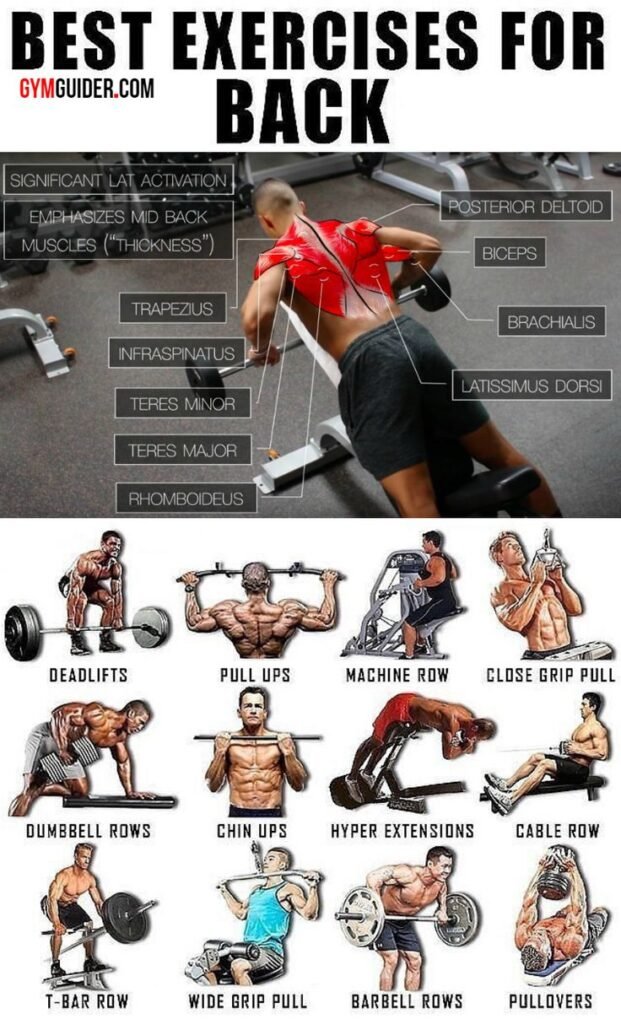
Back training is key for a balanced physique, but many gym-goers make common mistakes in back workouts. One big error is poor form, which can cause injury and not work the muscles well. Many people focus too much on big lifts and forget about other important muscles, leading to back training errors.
For example, doing lots of lat exercises like pull-ups and lat pulldowns might miss out on working the upper and lower traps and deeper muscles. This can leave your back workout incomplete. To fix this, add different horizontal pulling exercises to your routine. Doing compound movements like the deadlift works many back muscles at once, giving you a full back workout.
Another mistake is relying too much on isolation exercises, which can lead to muscle imbalances. Using both underhand and overhand grips helps target different back areas, improving strength and looks. Avoiding workout mistakes means focusing on good technique and mixing up your training.
Using training straps can help you do more reps and grow your muscles. But, sticking to proper form with weights you can handle for 8-12 reps is key to avoid hurting other muscles. Finally, adding isolation exercises for the lower back at the end of your workout helps strengthen the spinal erectors, finishing your back training.
Setting Your Back Workout Routine
Creating a solid back workout routine means knowing the different muscles in your back. It should focus on building strength and size. Use compound movements and isolation exercises for a complete plan.
A good back workout routine includes:
- 8-10 rep range for building raw mass
- Heavy rows and deadlifts with wrist straps for thickness
- Variety of chin-ups and pull-downs for upper back width
- Higher repetitions and supersets for back detail
Beginners should start with basic exercises to avoid injuries. Keep proper form and use the pad during rows to protect your lower back. Include exercises for Lats, Upper and Lower Traps, and Erector Spinae for balanced growth.
Just focusing on lat exercises can limit strength. Pairing exercises increases intensity. Deadlifts and Weighted Chin Ups engage many muscles, and different grips help with muscle growth.
Adding explosive moves like the Barbell Dead Row after Deadlifts boosts strength and athleticism. This helps improve performance for heavier weights.
| Exercise | Focus Area | Rep Range |
|---|---|---|
| Deadlifts | Overall Back Strength | 8-10 reps |
| Weighted Chin Ups | Upper Back Width | 6-8 reps |
| Barbell Dead Row | Back Thickness | 8-10 reps |
| Pull-Downs | Lat Development | 10-12 reps |
| Supersets | Back Detail | 10-15 reps |
- [2 Exercise modes & Detachable Handles] By changing the connection ways between the hoist buckle and the high strength a…
- [Professional Components] Breakingproof ball design of the cable and heavy-duty alloy buckle can prevent the rope from b…
- [Premium Material] Includes with 70-inches and 90-inches high-strength sheathed cables, provides more cable length optio…

- DO MORE WITH YOUR ROMAN CHAIR EXERCISE EQUIPMENT – Much more versatile than a regular roman chair hyperextension bench, …
- REDUCE & PREVENT LOWER BACK PAIN – Straighten your posture & take care of your lower back pain while easily strengthenin…
- STRENGTHEN YOUR ENTIRE BODY – Use the hyperextension roman chair to sculpt your upper body with preacher curls & dumbbel…

- Full-body Adjustable Weight Bench – Work Your Arms, Back, Chest, Glutes, Hamstrings and Core. Use for Bench Press, As a …
- Lift with Confidence – Our Multi-functional Workout Bench Works Well with Weights Dumbbells Set and are Made with High G…
- Comfortable and Sturdy – This Multi-functional Adjustable Bench is Designed with Triangular Base Support and Thick Cushi…

- 4-IN-1 Folding Exercise Bike for Home Workout: The upright posture of this bike provides you with high-intensity exercis…
- Bottle Holder: We’ve intentionally added a Bottle Holder to this bike, which is something that other X-BIKE models don’t…
- Compact Design & Easy to Move: The folding exercise bike is extremely suitable for the small living room because it does…
Essential Exercises for a Well-Rounded Back
Building a strong back means working on both the upper and lower back. Mixing upper back exercises and lower back exercises boosts strength and function. Knowing which exercises target each area helps with complete essential back workouts.
Upper Back Exercises
Strong upper back muscles help with posture and movement. Here are some key exercises:
- Bent-over Rows: Works the trapezius and rhomboids for muscle growth.
- Pull-ups: A classic exercise that targets the lats and improves grip strength.
- Lat Pulldowns: Isolates the lats and activates other muscles.
Lower Back Exercises
Lower back exercises are key to preventing injuries and staying stable. Try these:
- Deadlifts: Works the erector spinae and other major muscles.
- Hyperextensions: Targets the lower back for strength and endurance.
Adding these upper back exercises and lower back exercises to your routine makes for a strong, functional back. Focus on proper form and core engagement for the best results. This approach will improve your strength and athletic performance.
| Exercise Type | Exercises | Targeted Muscles |
|---|---|---|
| Upper Back | Bent-over Rows, Pull-ups, Lat Pulldowns | Trapezius, Rhomboids, Latissimus Dorsi |
| Lower Back | Deadlifts, Hyperextensions | Erector Spinae |
Effective Warm-Up Techniques for Back Workouts
Getting your body ready before back exercises is key to doing your best and staying safe. A good warm-up boosts blood flow, makes muscles more flexible, and gets them ready for action. This makes your workout successful.
Using dynamic stretches for back workouts works well. These include:
- Arm circles for shoulder mobility
- Side bends to engage the obliques
- Hip circles to loosen the lower body
- Torso twists for spinal mobility
Do each stretch for 30 seconds and repeat 2-3 times. This helps warm up the back muscles, which are crucial for stability and strength.
Start with light weights and low reps in back exercises to ease into it. As you get into the workout, slowly add more weight and reps to avoid injuries.
A good warm-up gets you ready for heavy lifting and helps build a strong back. It also improves posture and fights back pain from sitting too much. Try different stretches and movements to find what works best for you.
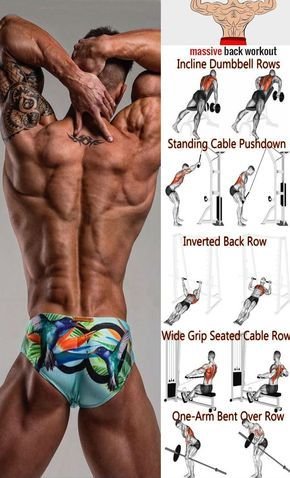
| Warm-Up Technique | Duration (seconds) | Repetitions |
|---|---|---|
| Arm Circles | 30 | 2-3 |
| Side Bends | 30 | 2-3 |
| Hip Circles | 30 | 2-3 |
| Torso Twists | 30 | 2-3 |
Utilizing Back Workout Images for Better Form
Using back workout images in training helps improve exercise form. These visuals show the right way to move and engage muscles. They help people understand how to position their bodies during exercises.
Looking at back workout images makes exercises more effective. It reminds people to keep the right form. This is key to avoiding injuries and doing well in workouts.
Back training visuals help fix common workout mistakes. For example, the right grip in exercises like deadlifts helps activate back muscles. A strong back supports daily activities and lowers the chance of muscle imbalances from sitting too much. Improving exercise form makes workouts more effective, leading to better results.
Learning about the back’s muscles, like the lats, traps, and erector spinae, helps with training. Back workout images show how exercises work different muscles. Using these images in workouts helps train all back muscles evenly. This avoids focusing too much on some muscles.
In conclusion, back training visuals make training more efficient. By using effective images, people can make sure their workouts are effective and safe.
Importance of Variety in Back Exercises
Adding variety in back exercises makes workouts more effective. It helps avoid getting stuck in a rut, keeps you motivated, and works different muscle groups. This mix of movements challenges muscles from all sides, promoting balanced strength and growth.
Exercises like the Conventional Deadlift and Trap-Bar Deadlift work on various muscles, including traps, delts, and lats. This variety ensures all muscle fibers get worked. Mixing high-rep exercises with strength training helps improve skills in pull-ups and power cleans.
Using different grips and stances targets specific muscles, like wide-grip rows for a V-shaped back. This targeted approach helps fix muscle imbalances and boosts back health. It also helps improve posture and reduce pain, important for those who favor front-muscle activities.
Combining exercises strengthens the mid-back, crucial for stability and support. Having back workouts make up 60% of your lifting routine is key to balance. So, variety in back exercises leads to a strong, balanced back, enhancing both physical performance and life quality.
How to Implement Mind-Muscle Connection in Your Back Training
Improving the mind-muscle connection is key for better back workouts. It helps muscles engage more and boosts workout results. By using specific cues, you can focus on the right muscles, making your workouts more effective.
Activation Cues for Better Muscle Engagement
Using certain cues can greatly improve muscle recruitment. Visualizing back muscle contractions helps build a stronger connection. This method is important because it helps use more muscle fibers, making workouts 71% more effective.
Engagement techniques like a thumbless grip or pulling with elbows help activate the back better. Beginners often find it hard to know which muscles to focus on without these exercises. In fact, 85% of them struggle with this, showing how crucial these cues are.
Before doing compound exercises, doing targeted activation exercises can increase muscle activation by 25%. Warm-up activities like kettlebell swings or hip thrusts prepare muscles for the main workout. They help stimulate muscles effectively.
It’s important to understand how the mind-muscle connection develops. People with longer femurs might find it harder to activate some back muscles. Isolation exercises can help bridge this gap and ensure proper engagement. With regular practice and mental focus, you can retrain your body for better movements. This improves your training sessions’ effectiveness.
Using Equipment vs Bodyweight for Back Workouts
Building a strong back can be done in many ways. Choosing between using equipment or bodyweight workouts changes the experience. Each method has its own benefits and challenges.
Equipment like pull-up bars and resistance bands gives clear resistance and helps you get stronger. Doing pull-ups and seated pulldowns targets certain muscles well. For example, 3 to 4 sets of 6 to 10 reps of pull-ups boosts upper back strength.
Bodyweight workouts are great because you can do them anywhere. They’re perfect for those who can’t get to the gym often. Exercises like the Superman and Inverted Row strengthen the back without needing heavy weights. They also work many muscles at once and help keep your core stable.
Here is a look at both training styles:
| Training Method | Advantages | Examples |
|---|---|---|
| Equipment for Back Workouts |
|
|
| Bodyweight Back Workouts |
|
|
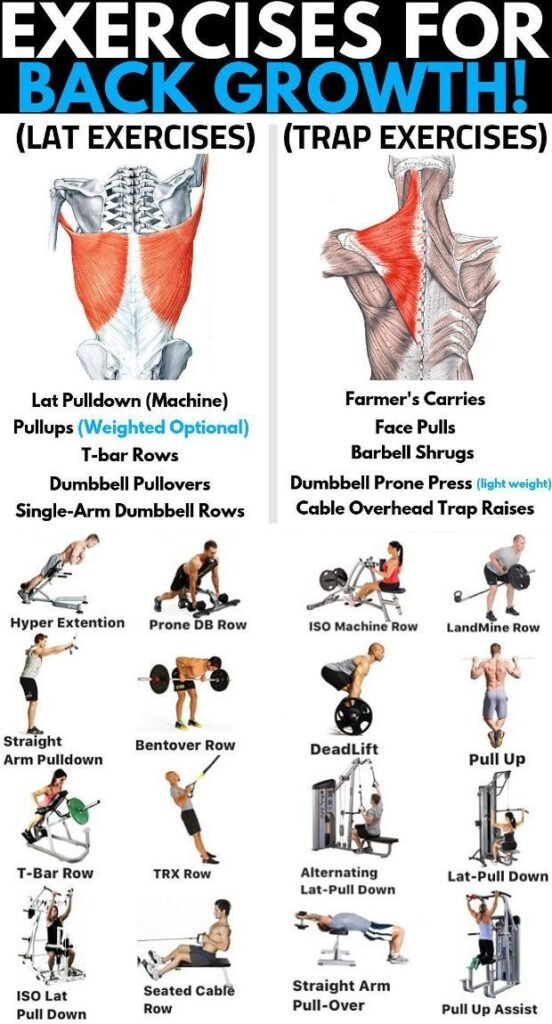
Using both methods together can give you the best results for strength and muscle growth. A good routine might include wide grip pull-ups and bodyweight exercises like the Reverse Fly or Y Raise. This mix not only strengthens your back but also boosts stability and prepares you for everyday activities.
Frequency and Recovery in Back Training
Getting the right back training frequency is key for the best results. It also lets your muscles recover well. A good plan might be to work on back and biceps once a week. This helps both muscles get better and recover well.
For those who train more, doing it several times a week can help muscles get stronger and adapt better. But, watch out for feeling too tired.
During each workout, stick to four back exercises and two for biceps to avoid overdoing it. Studies show doing 12–20 sets a week for each muscle group helps grow muscles. Also, taking 2–3 minutes rest between sets helps improve your workout performance. This lets muscles rebuild and recover well.
It’s important to find the right balance between how hard you train and resting. Doing exercises like Pull-Ups or Lat Pulldowns correctly can really help your back grow without getting hurt. Pay attention to your body. Enough rest not only helps muscles grow but also keeps you training longer.

